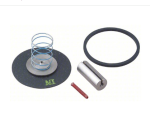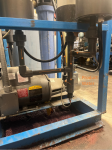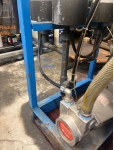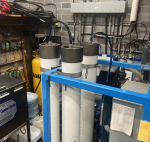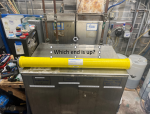Big Chris
New member
Everyone,
I need some help. I own an older SuperWash site, and when we (the Mrs & I) bought it, it was in rough shape. I've been rehabbing it for about a year now, and I finally got far enough down the list to begin to try and revive the RO system. It's current state is it's simply turned off and the system is bypassed so water runs through a granular charcoal filter and into the RO tank. So essentially I am only filtering water through a Charcoal filter and using that as spot free.
Why did I put this project off 'till the end? Turns out we have unusually high quality water in our township. Our tap water is 30-35 ppm, and about 2 grain hard. Ph is 6.8 and Cl is 1ppm. When this water dries on your windshield, can you see spots? Yes, but they are very hard to see, and pretty much only in direct sunlight. Our community water source is a rain fed reservoir on quartzite conglomerate bedrock.
At any rate, I want to get this system running and up the quality of our washes. My system is a Applied Membranes Unit. I gave them the model number & SN number. I asked for a schematic, owner manual, parts list, any documentation for the unit that they may have had. Nothing. Nada, zip, zilch. They tell me the unit was shipped in 1995 & offered to sell me a new system.
I tried turning the system on, and it powers up, but it wont shut off and will over fill my tank. I'm thinking of checking the float valve and the solenoid valves, anything else I should look for.
FWIW, I'm really mechanically inclined, and I'm a pretty good problem solver. However I have zero experience with an R/O system. Any pitfalls to avoid?
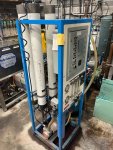
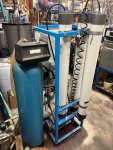
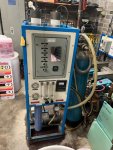
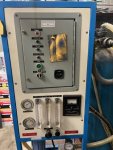
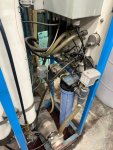
I need some help. I own an older SuperWash site, and when we (the Mrs & I) bought it, it was in rough shape. I've been rehabbing it for about a year now, and I finally got far enough down the list to begin to try and revive the RO system. It's current state is it's simply turned off and the system is bypassed so water runs through a granular charcoal filter and into the RO tank. So essentially I am only filtering water through a Charcoal filter and using that as spot free.
Why did I put this project off 'till the end? Turns out we have unusually high quality water in our township. Our tap water is 30-35 ppm, and about 2 grain hard. Ph is 6.8 and Cl is 1ppm. When this water dries on your windshield, can you see spots? Yes, but they are very hard to see, and pretty much only in direct sunlight. Our community water source is a rain fed reservoir on quartzite conglomerate bedrock.
At any rate, I want to get this system running and up the quality of our washes. My system is a Applied Membranes Unit. I gave them the model number & SN number. I asked for a schematic, owner manual, parts list, any documentation for the unit that they may have had. Nothing. Nada, zip, zilch. They tell me the unit was shipped in 1995 & offered to sell me a new system.
I tried turning the system on, and it powers up, but it wont shut off and will over fill my tank. I'm thinking of checking the float valve and the solenoid valves, anything else I should look for.
FWIW, I'm really mechanically inclined, and I'm a pretty good problem solver. However I have zero experience with an R/O system. Any pitfalls to avoid?








